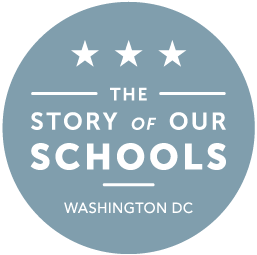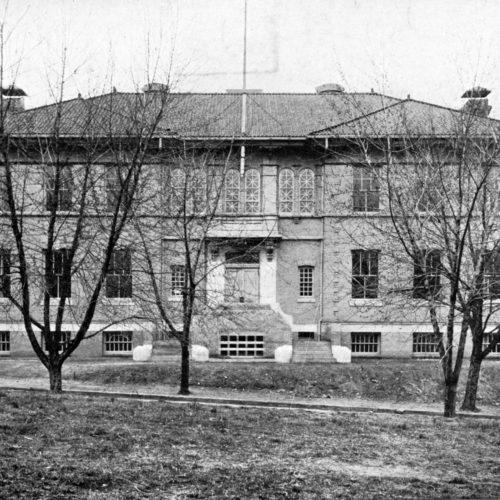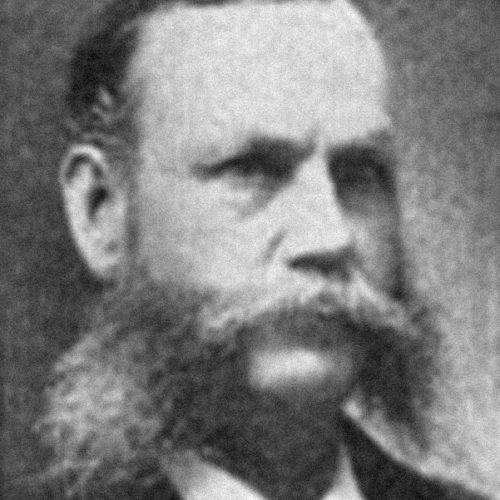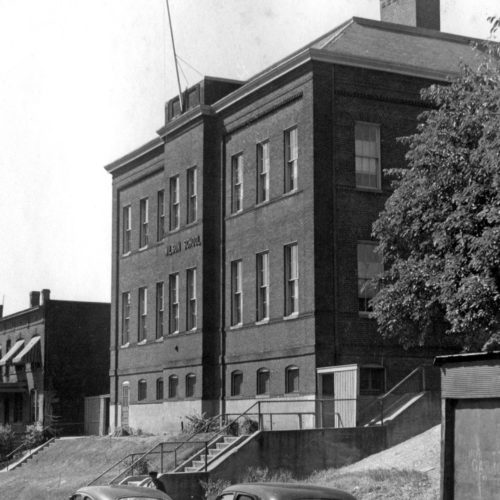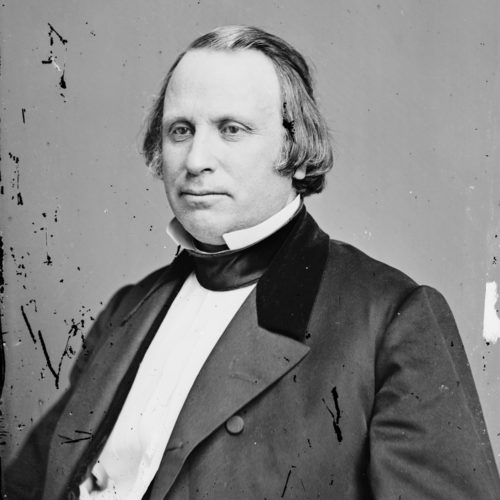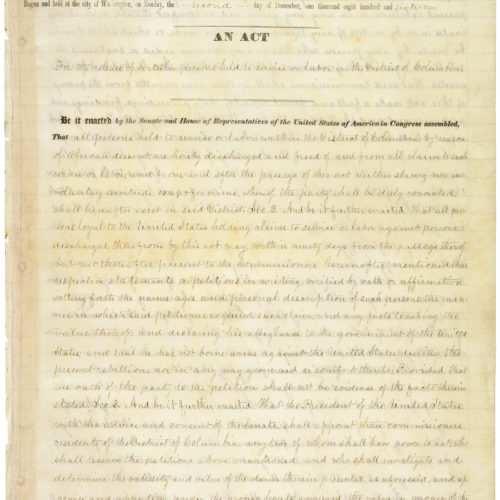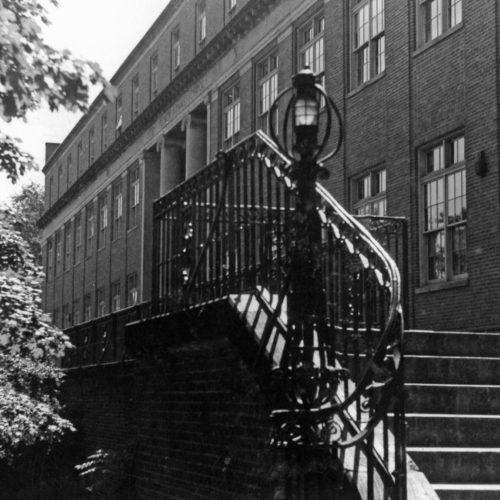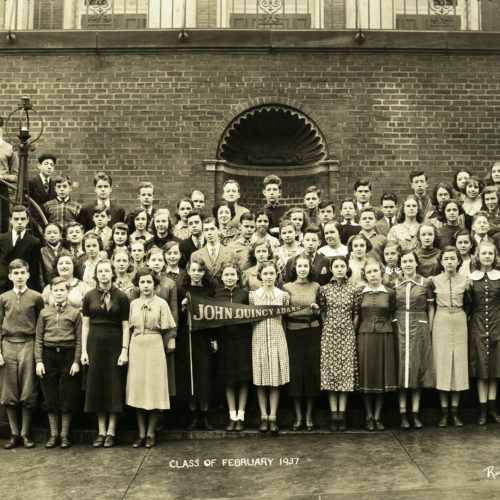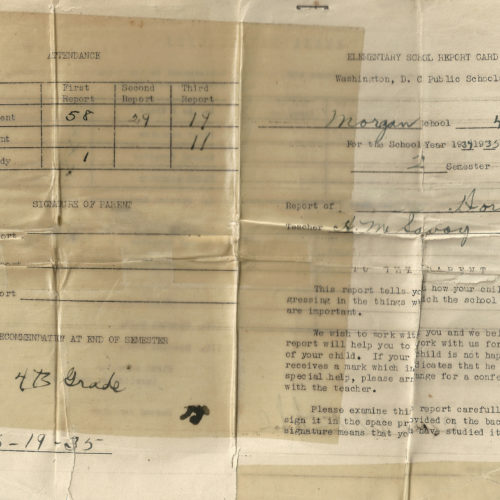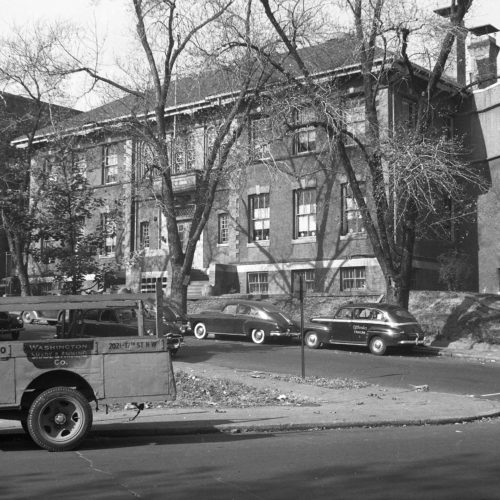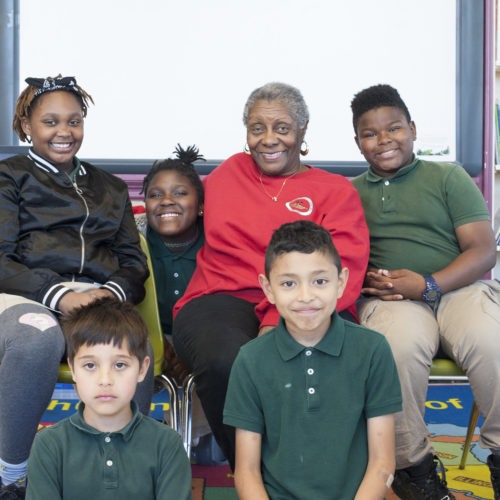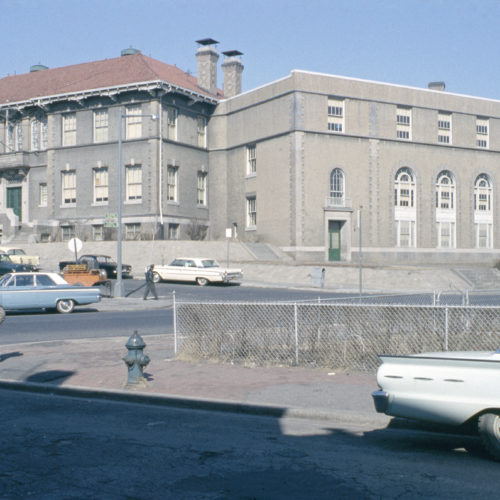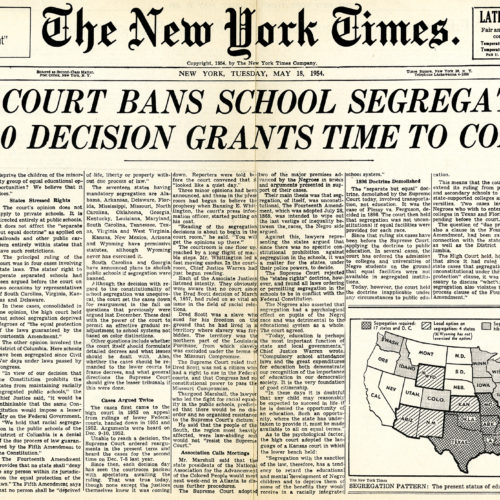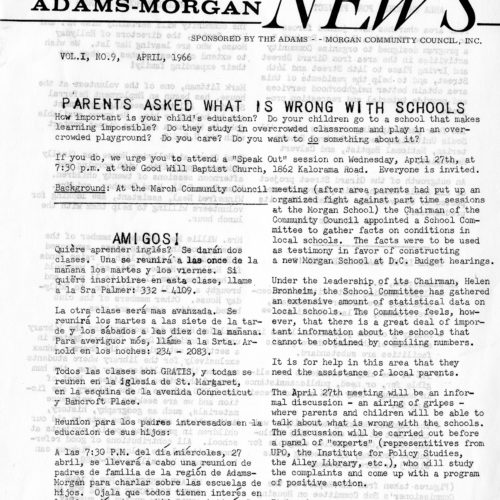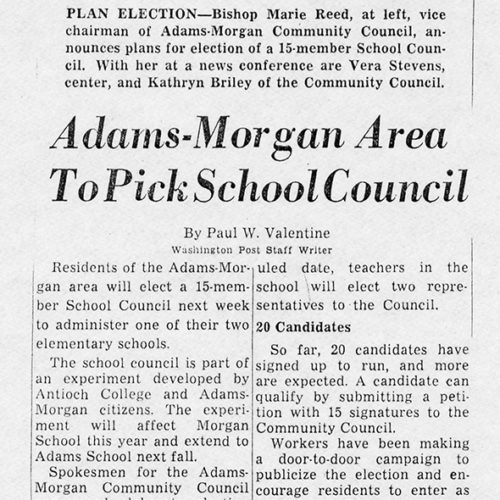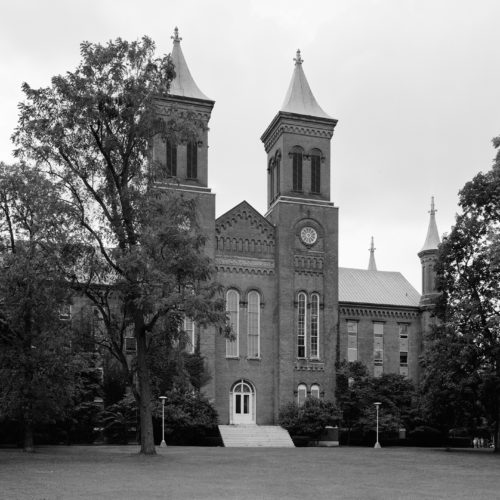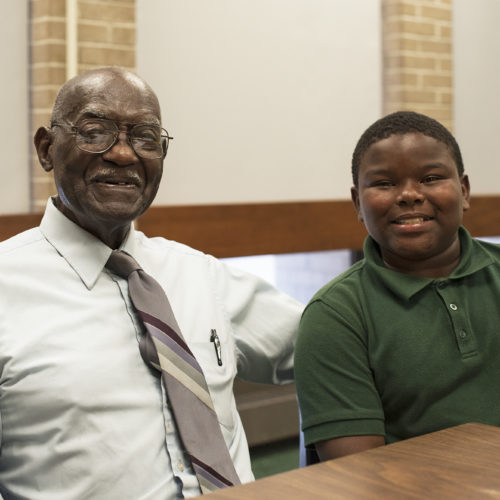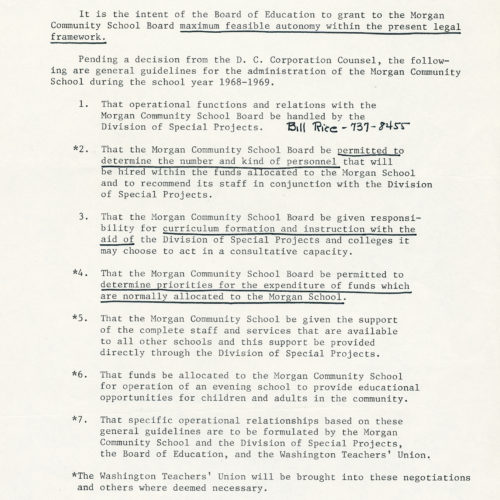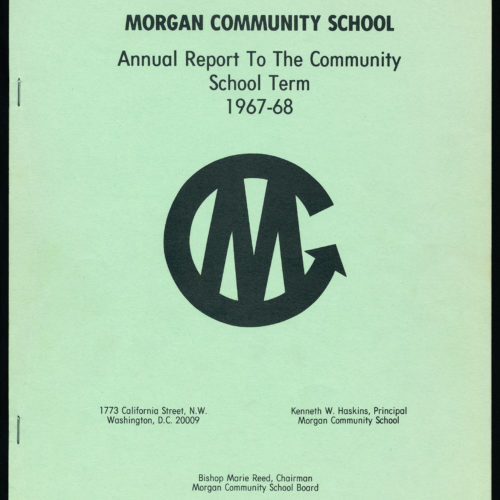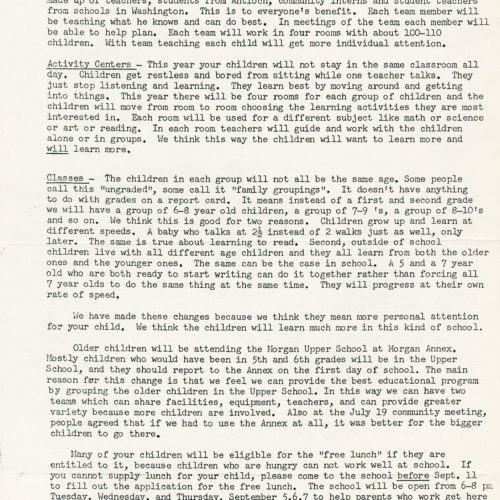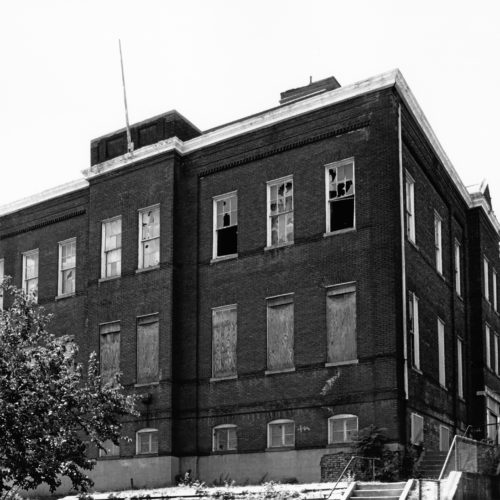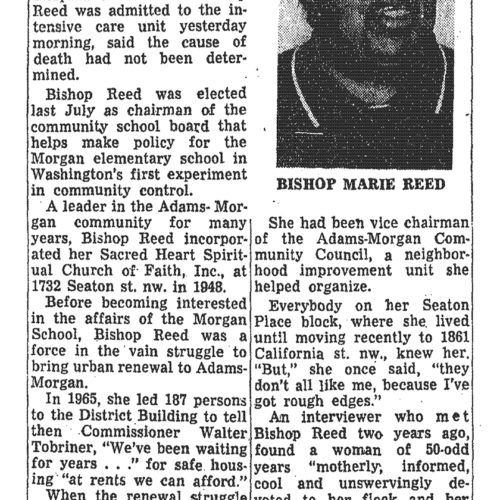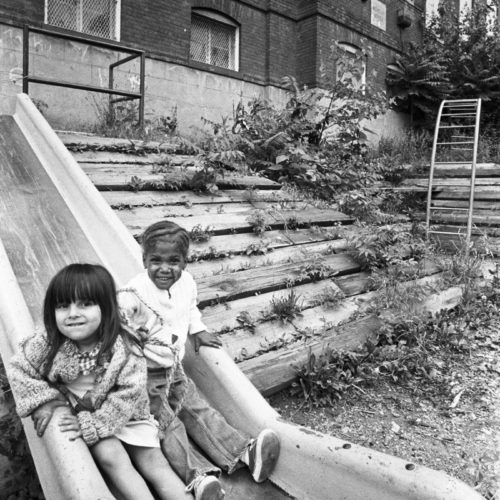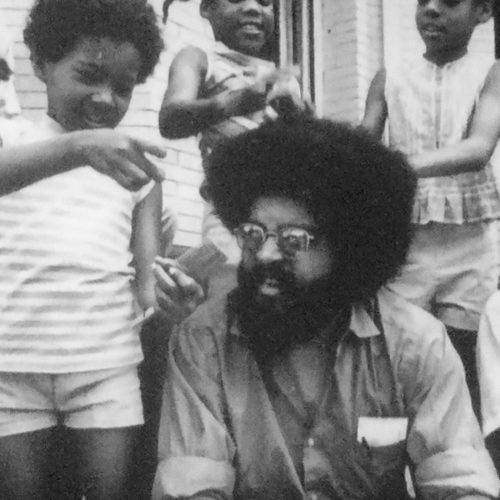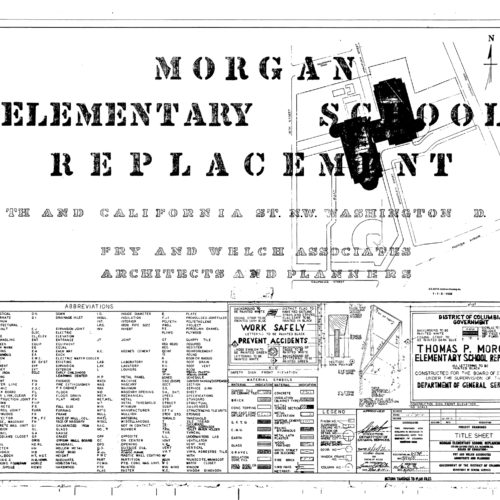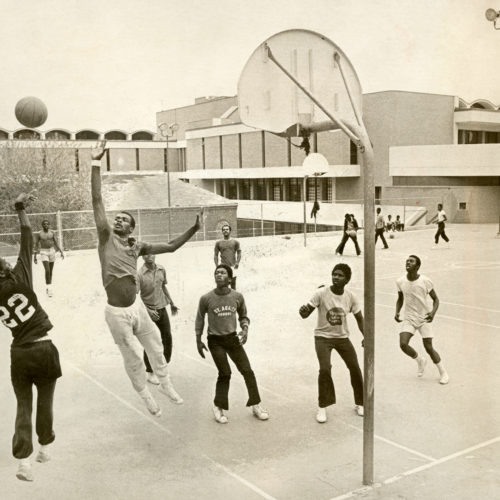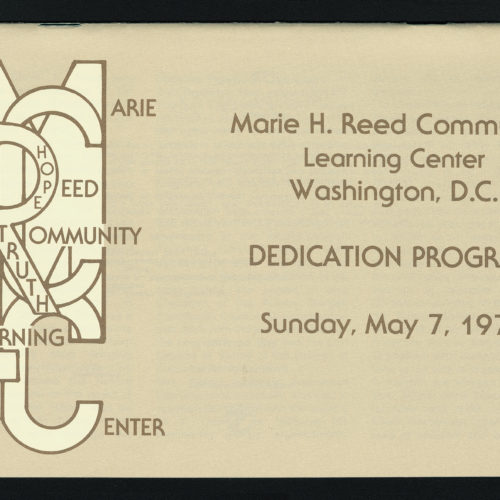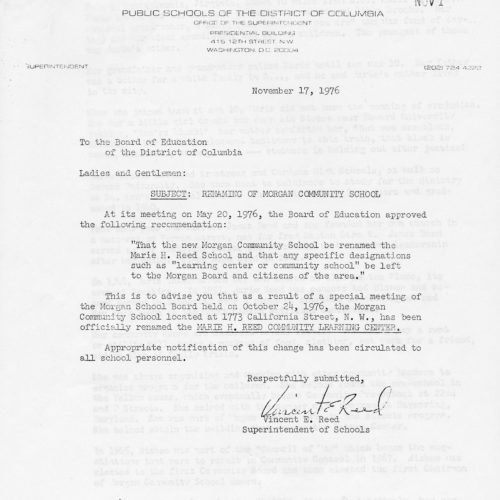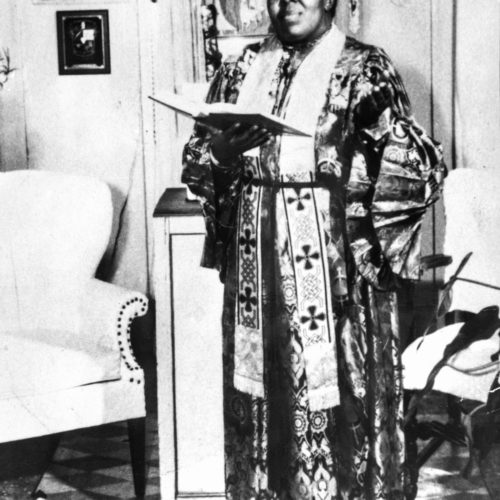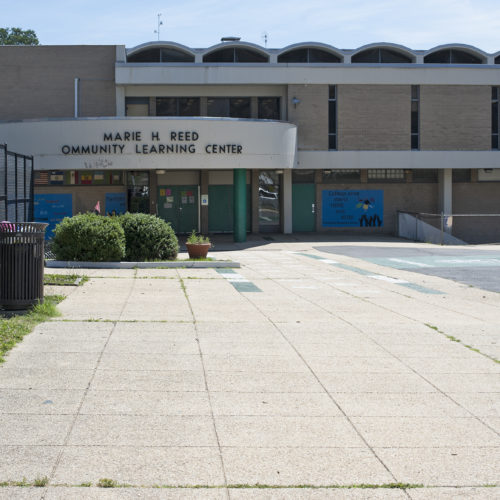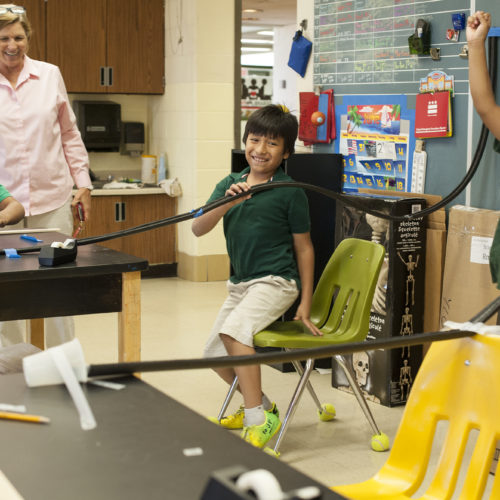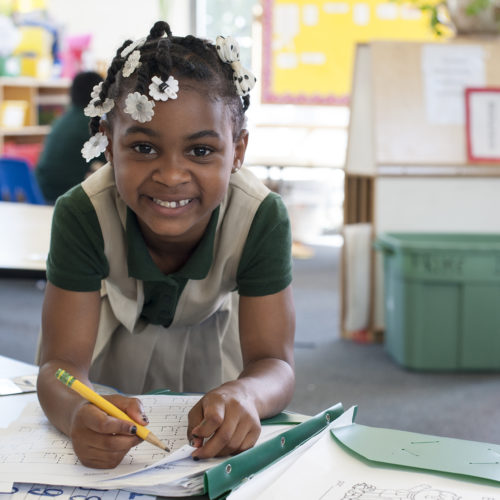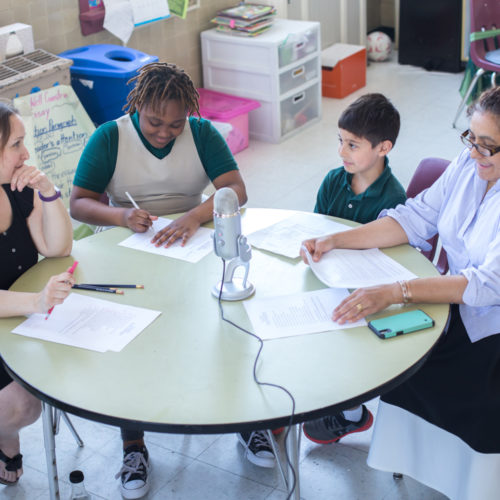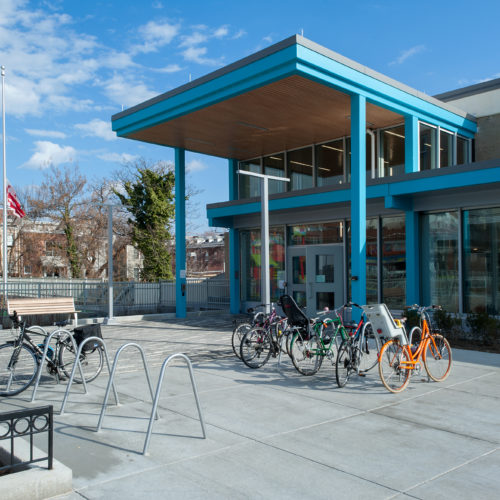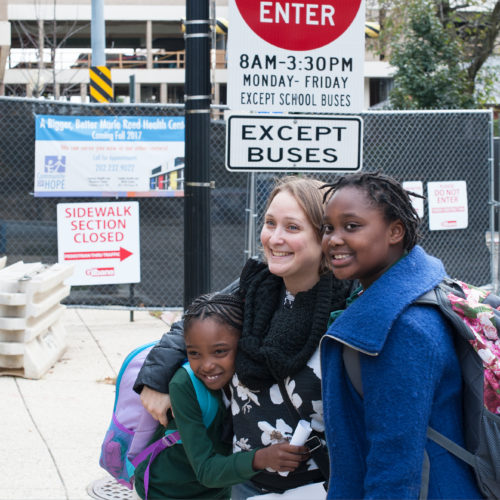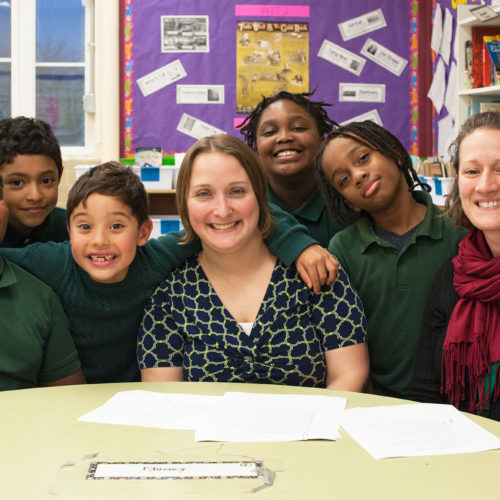The granddaughter of an enslaved woman, Marie Brooks was born on April 2, 1915 in Spotsylvania, VA. She lived with her grandparents until age 10 when she moved to DC to live with her father, who was a butler, and her mother.
While in DC, she attended Armstrong and Cardozo High Schools and Howard University. She then studied for the ministry at St. Ann’s Spiritual School in Baltimore. In the 1940s, she graduated, married James Reed, and started her own church, the Sacred Heart Spiritual Church of Faith. In 1953 she was consecrated Bishop.
Marie Reed was dedicated to her community. She would pay a neighbor’s rent or utility bill, bring food or clothing to those in need, and help people find work. Working with other community leaders, she organized summer camp programs, a pre-school, and a nature center.
Believing that all communities should have a say in decisions that affected them, she was instrumental in the formation of the Morgan Community School. Elected the first Chairperson of its School Board, she believed that parents should be involved with their children’s education and that all children should have the opportunity to develop their creative abilities.
